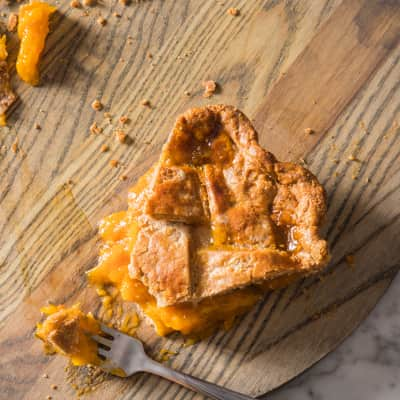My Goals and Discoveries
Tender, flaky whole-wheat crust
We use a unique mixing method to waterproof some of the flour in the crust with butter so it can’t form gluten and remains tender. The remaining flour is hydrated with water, which allows plenty of gluten to form, creating flaky layers.
Fruit slices that stay intact
Keeping the skins on the plums helps them hold their shape during baking.
Clear, sliceable filling
A few tablespoons of cornstarch thicken the plum juice into a translucent gel. Pectin from the plum skins also helps thicken the filling.














